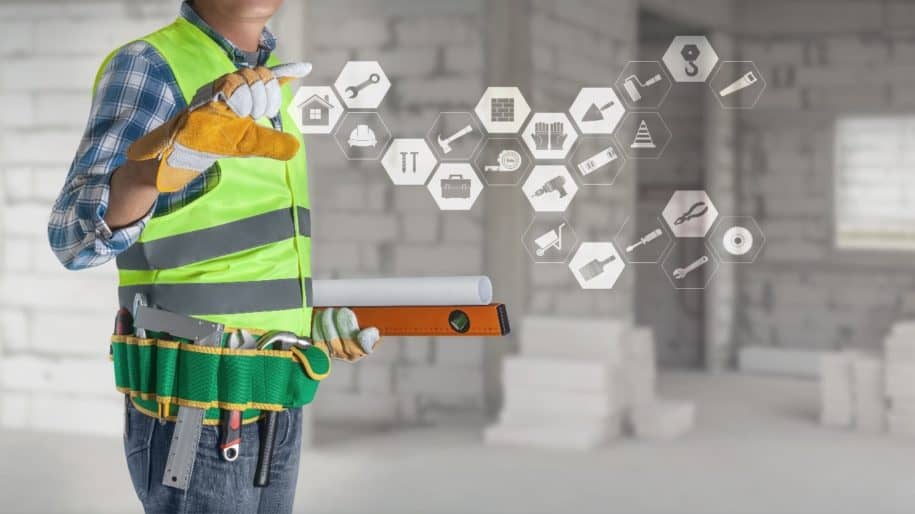Construction is the leading industry with regards to its impact on nature and the environment. Over the past two decades, the construction industry itself has undergone many developments.1 The projects, materials used, machinery and tools, as well as the manner of delivery for those projects have all changed dramatically. In part, this is due to new technologies enabling more complex construction projects. This aspect of growing complexity makes it crucial that contractors have a fully integrated, extensive safety program that can adapt to the latest industry requirements. Such programs enable growth within companies and allow contractors to stay competitive. Contractors and construction companies are seeing significant positive impacts from investing in strong environmental health and safety (EHS) programs.
The benefits of an EHS management system vary, depending on the type of industry or type of project, but for construction companies, these systems enable a reduction in their environmental impact. An EHS management system can be a powerful tool for improving performance and reducing the carbon footprint. Additionally, properly implemented EHS Management deters the negative impacts that construction can have on the livelihood of the general public.2 Many people are affected by construction projects, including employees, clients, suppliers, shareholders, contractors, regulatory bodies, and local community members. Industry leaders equate surpassing standards in EHS management with most other aspects of construction work. Prioritizing excellence in EHS management systems demands a structured approach to the identification, evaluation, and management of work-related risks.
Benefits to implementing an EHS Management System
1. Waste Reduction
Construction projects generate waste, including demolition debris, wastewater, and plastic litter. An EHS management system can assist with waste management by keeping an accurate record of the waste that is generated, reused on-site, recycled, and/or discarded. Having a plan to refer back to and real-time tracking to ensure tasks are being accomplished will help reduce unnecessary waste.
2. Utilize Resources
Maximizing and using all available resources is made easier through systems that track potential recycling and reusing waste on-site. EHS management systems can guide contractors when it comes to ordering materials, saving time with the procurement process, and preventing excessive inventory from being needlessly acquired.
3. Reducing Environmental Risk
EHS management systems and software can assist with determining the environmental impact of construction projects, estimating the severity of potential risks, and how they can be mitigated or prevented.
Technological Advances in the Construction Industry
Improvements in construction technology have mainly been geared toward promoting sustainability. The demand for large construction projects with minimal impacts on the environment can only be met through these technological advances. Modern technology has not only resulted in profound changes in the construction industry, but it has also improved EHS management for construction companies. Employment of technology for environmental health and safety is gaining more traction due to increased pressures placed on construction companies to comply with laws and standards.
Employers in the construction industry now have access to numerous software applications, such as SafetyStratus, that enable them to concisely manage incident reporting, OSHA record-keeping, employee safety monitoring, training, and upkeep of compliance and regulatory changes in the industry. Technological advances have benefited workers for many years. Included in this aspect, evolving software offers a fresh perspective on how environmental health and safety can be improved in the workplace.
Technology can also improve EHS management by using the power of high-speed communication. Advanced reporting tools and software collect real-time data and transfer the information to a centralized system to allow managers to remain updated on the current status of workplace safety as well as any incidents that may have occurred.
Technology Increases Awareness
Environmental health and safety are not only an issue for the construction industry, but for virtually any profession, and technology helps support a comprehensive EHS management system. Technology allows for an improved focus on employee health and workplace safety, as well as allowing workers to easily determine the impact of a project on the environment. Technology and EHS software also increase worker compliance to regulations, through greater awareness and easily accessible tools and resources.3
Technology and EHS software also reduce human error. The software helps with storing all real-time data within one system. It also allows employers to collect data on repeated incidents, to better focus on environmental and safety training to target problem areas.
The evolution of construction as an industry parallels advances in technology. Modern machinery is developed with safety in mind, and many workplaces no longer see safety and environmental protection as a regulatory requirement – instead, it has become simply how safe work is performed. Fortunately, upgrades in technology and modern EHS management system software have simplified EHS management, helping to cut costs and improve workplace safety while minimizing environmental impacts.
Author Bio
The SafetyStratus Research Advisory Group (RAG) brings together thought leaders from the global environmental, health, and safety community to promote best practices and provide key insights in the profession and the industries they serve. The Research Advisory Group also advocates, where practical, the intersection of and advances with the use of technology, such as the SafetyStratus enterprise EHS software platform. Group membership consists of representatives from across varied disciplines and market sectors as well as select members of the SafetyStratus team.
The primary objectives of the SafetyStratus RAG partnership are to:
- Build a strategic partnership between EHS practitioners and the SafetyStratus team.
- Provide engaging and practical content to the global EHS community.
- Provide discipline and market feedback specific to SafetyStratus products and services.
While the objectives of the RAG are varied, the primary public-facing outcome will be available through engaging and practical content found on the SafetyStratus resource pages. Various articles, papers, and other valuable resources will be produced and shared as part of an ongoing effort to cultivate a robust community. Ultimately, the SafetyStratus RAG will expand to have a broader reach and provide opportunities for more inclusion by all interested EHS professionals in a collaborative community environment.



